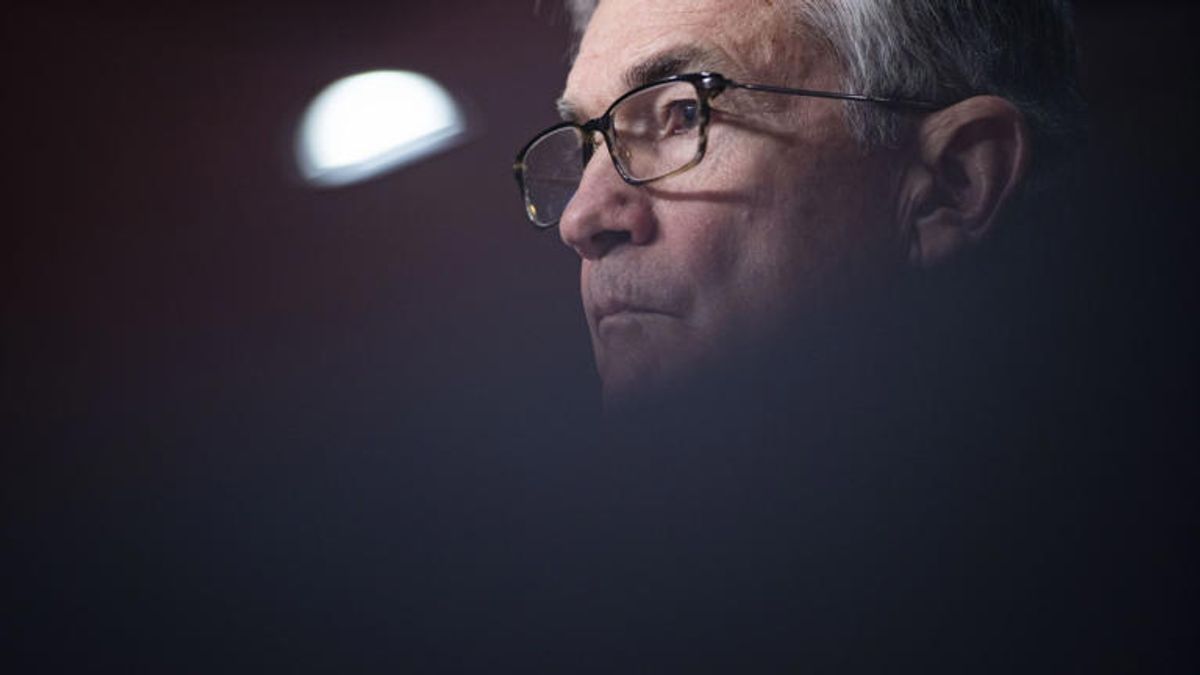The Powell Put: Should the Fed Cut Rates?

Market Backdrop
A bio shock!
What If ...
Last Word
To cut or not to cut is the question. A biological shock, an outbreak such as COVID-19 can have undefined boundary conditions. Nobody really knows the lasting effects or the duration of this pandemic. It is this very uncertain nature of this event that demands caution and careful monitoring from the Fed.
Market Backdrop
Post the double digit market correction this week, there is a lot of chatter that the market is pricing in 3 Fed rate cuts in 2020. Note that most of this correction has been engineered by algos, quants and hedge fund de-risking. These pools of capital make their decisions based on shorter-term technicals, fear gauge indicators and market surprise indices (in addition to some fundamental indicators). These quant models or "machines" have been pre-programmed on the basis of modern portfolio theory, multi-factor risk models and have been "trained" to analyze and predict the market impact of monetary and fiscal policy decisions.
Given the input data that these models work off of, in theory, it makes perfect sense that the market reaction is suggesting that the Fed cut rates since monetary policy has been very useful in tackling temporary, measurable demand shocks for e.g. acts of God, terrorist attacks or trade wars.
Merits of Fed action notwithstanding, these algorithmic programs have put the COVID-19 market shock squarely in the same temporary shock category. And therein lies the discrepancy.
A bio shock!
A biological shock, an outbreak such as this can have undefined boundary conditions. Nobody really knows the lasting effects or the duration of this pandemic. It is this very uncertain nature of this event that demands caution and careful monitoring from the Fed.
In the short-run (1-3 month duration), while vaccines will still be unavailable, hypothetically, the following outcomes are probable in a best case scenario: (i) active COVID-19 cases start falling (ii) immunosuppressant and anti-viral treatments start working on infected people and the second derivative of recovered patients starts inclining (iii) the virus does not mutate and recovered patients don't have relapses (iv) warmer weather comes along and suppresses virus contagion.
In this scenario, let's say the Fed cuts rates by 50 bps in March, and the COVID-19 pandemic dies down by May. Come summer, COVID-19 goes away, people go back to work, supply chains are fixed, liquidity returns and the Fed rate cut gives consumer demand a shot in the arm. A V-shaped recovery is well and truly underway. Come 2021, if the vaccines work and the virus is just another "flu" without any occurrence of a "mutative" new strain, this event will be erased from the annals of medicine. This will likely be the most optimal outcome for the markets, but not necessarily a panacea for a biological disease outbreak.
What If ...
Now, let's flip this around. If in the medium run (5-6 months): (i) active COVID-19 cases start rising (ii) immunosuppressant and anti-viral treatments don't work (iii) the virus mutates and recovered patients relapse (iv) warmer weather comes along but does not suppress virus contagion. An apocalyptic scenario, a human tragedy emerges, one that will cause a massive supply shock. A rapid rise in inflation will ensue and the world will in all likelihood see a recession. The Fed has to prepare for such an eventuality, even if it is a low probability event. This would be the right time for the Fed to cut rates by 50 bps and jump start the slowing economy. If the Fed can't pull any levers at this juncture, the recession will most certainly deepen (we haven't even talked about election results in late 2020, a potential for trade war escalation).
"COVID-19 is an RNA virus. RNA viruses have high mutation rates—up to a million times higher than their hosts—and these high rates are correlated with enhanced virulence and evolvability, traits considered beneficial for viruses." - Wikipedia
And worst case, say if the flu returns with a "mutative" vengeance in year two, deeming vaccines to be ineffective, the Fed has no more arrows left in its quiver. At that point, we are faced with a massive problem - a stark possibility of potentially negative interest rates and an outbreak that won't die. Therefore, it would be prudent if the Fed doesn't cut rates by 50 bps in March. If you are Mr. Powell, you want to prolong monetary policy options for as long as possible in order to enable human ingenuity to fight the virus.
Last Word
In conclusion, it makes sense for the Fed to wait and see how this pandemic unfolds. It is clear that if there is a supply shock, we will face higher inflation. So,
- let rates be where they are for now
- wait for the pandemic to go away, and then ...
- cut rates by 50 bps to assuage markets and catalyze an economic recovery
Biological dislocations cannot be fixed with monetary policy (or fiscal policy for that matter). We need a cure, we need a vaccine. We need human ingenuity to take us out of this. A Powell put in March will be temporary and of very little use.
"Patience you must have my young padawan" - Yoda
Share This